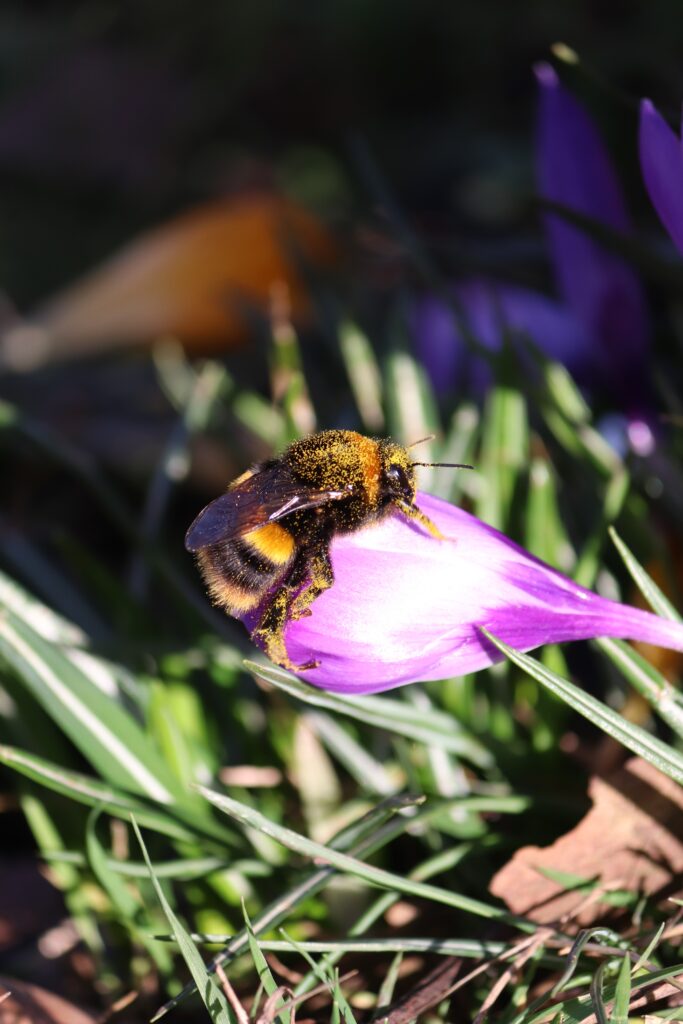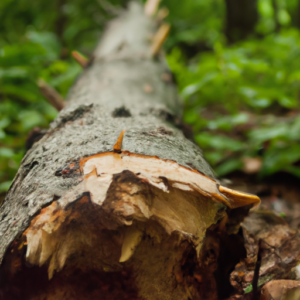Why is biodiversity essential for the environment? Biodiversity is more than just a buzzword; it is the very foundation of a thriving environment. With its vast array of species, ecosystems, and genetic variations, biodiversity plays an instrumental role in maintaining the delicate balance of our planet. From providing essential ecosystem services such as pollination and nutrient cycling to sustaining a wide range of habitats and food sources, biodiversity is the driving force behind the health and resilience of our environment. Join us as we explore the intrinsic value of biodiversity and unravel the crucial answers.

Check Out Our Top Eco Friendly Product Picks On Amazon Here
1. Why is biodiversity essential for the environment: Maintenance of Ecosystem Stability
1.1 Balance of Natural Processes
Biodiversity plays a crucial role in maintaining ecosystem stability by ensuring the balance of natural processes. Within an ecosystem, different species interact with one another, forming intricate food chains and webs. These interactions help regulate populations, control diseases and prevent the domination of one species over others. The delicate balance of these processes is necessary for the overall health and stability of the ecosystem.
1.2 Resilience to Environmental Changes
Another important aspect of biodiversity is its contribution to the resilience of ecosystems in the face of environmental changes. Ecosystems with higher levels of biodiversity tend to be more resilient and adaptable to disturbances such as climate change, natural disasters, and human activities. With a wide variety of species and genetic diversity, ecosystems are better equipped to respond and recover from these challenges.
1.3 Protection Against Invasive Species
Biodiversity also plays a key role in protecting natural ecosystems from invasive species. Invasive species are non-native organisms that disrupt the balance of ecosystems, outcompeting native species and causing ecological imbalances. A diverse range of species in an ecosystem can act as a natural defense mechanism against invasive species by reducing their establishment and spread. The presence of a variety of species increases competition and reduces the chances of invasive species dominating the ecosystem.
2. Why is biodiversity essential for the environment: Provision of Ecosystem Services
2.1 Climate Regulation
Biodiversity is crucial for climate regulation, as different ecosystems have the ability to store and sequester carbon dioxide, a major greenhouse gas responsible for climate change. Forests, for example, act as carbon sinks, absorbing large amounts of carbon dioxide from the atmosphere and storing it in trees, soil, and other vegetation. The preservation and restoration of diverse ecosystems are essential for regulating climate patterns and mitigating the impacts of climate change.
2.2 Water Purification
Ecosystems with high biodiversity play a vital role in purifying water sources. Wetlands, for instance, act as natural filters, removing pollutants and excess nutrients from the water. The presence of a diverse range of plant species within wetlands enhances the filtration process and improves water quality. Protecting and restoring these ecosystems is crucial for ensuring clean and healthy water supplies.
2.3 Soil Fertility Enhancement
Biodiversity also contributes to soil fertility enhancement. Different plant species have varying nutrient requirements and uptake capacities. Through their root systems, diverse plants can access different nutrient sources, improve soil structure, and promote nutrient cycling. This ensures the availability of essential nutrients for other organisms in the ecosystem, contributing to the overall health and productivity of the soil.
2.4 Nutrient Cycling
Nutrient cycling is a crucial ecosystem function that involves the movement and recycling of essential elements such as carbon, nitrogen, and phosphorus. Biodiversity plays a significant role in facilitating nutrient cycling as different species contribute to different stages of the cycle. For example, decomposer organisms such as bacteria and fungi break down dead organic matter into simpler forms, releasing nutrients back into the soil for uptake by plants. By maintaining diverse ecosystems, we support robust nutrient cycling processes essential for the sustainability of life on Earth.
2.5 Pollination and Seed Dispersal
Biodiversity is essential for the pollination of plants and the dispersal of seeds. Many flowering plants rely on animals such as bees, butterflies, birds, and bats for pollination. These animals transfer pollen between flowers, allowing for fertilization and subsequent seed production. Pollination is critical for the reproduction and survival of plant species. Similarly, diverse animal species assist in the dispersal of seeds, carrying them to different locations and promoting the establishment and survival of plant populations. Without biodiversity, the pollination process and seed dispersal networks would be severely disrupted, leading to a decline in plant diversity and ecosystem health.
3. Why is biodiversity essential for the environment: Support for Human Livelihoods
3.1 Food Security
Biodiversity is fundamental for ensuring food security and providing a diverse range of nutritious foods. Many crop varieties and livestock breeds are derived from wild relatives that possess valuable genetic traits. These traits have been harnessed through selective breeding to increase crop yields, resistance to pests and diseases, and nutritional value. A wide range of species also contributes to the diversity of diets, ensuring access to essential nutrients and reducing the risk of malnutrition. Protecting biodiversity is essential for maintaining the resilience and sustainability of our food systems.
3.2 Medicinal Resources
Biodiversity is a significant source of medicinal resources, providing important ingredients for traditional medicines and modern pharmaceuticals. Many plant and animal species have bioactive compounds that can be used to develop treatments for various diseases. For example, plants like the Pacific yew tree have yielded compounds that have been synthesized into drugs to treat cancer. Preserving biodiversity is crucial for unlocking potential medicinal resources and ensuring continued access to life-saving treatments.
3.3 Economic Benefits
Biodiversity provides numerous economic benefits through various industries such as agriculture, forestry, fisheries, and ecotourism. The diversity of plant and animal species supports agricultural productivity, ensuring stable yields and income for farmers. Forests, with their diverse array of timber and non-timber products, are a significant source of income for many communities. Fisheries and aquaculture industries also rely on diverse marine species for commercial purposes. Furthermore, ecotourism activities generate revenue from nature-based recreational opportunities, attracting tourists who appreciate the beauty and diversity of natural environments. By valuing and conserving biodiversity, we can sustain these economic benefits and enhance local livelihoods.
3.4 Cultural and Spiritual Values
Biodiversity is deeply intertwined with cultural and spiritual values, forming the basis of indigenous knowledge and practices. Many cultures around the world have cultural traditions, rituals, and beliefs that revolve around specific species or natural landscapes. Biodiversity acts as a source of inspiration and connection to the natural world, providing cultural identity and a sense of belonging for many communities. Preserving biodiversity is not only important for the environment but also crucial for safeguarding cultural heritage and maintaining the spiritual well-being of societies.
4. Why is Biodiversity Essential for the Environment: Enhanced Genetic Diversity
4.1 Adaptation and Evolution
Biodiversity is essential for adaptation and evolution to occur in response to changing environmental conditions. The genetic diversity within populations and species provides the raw material for natural selection to act upon. When faced with new challenges, the presence of diverse genetic traits increases the chances that some individuals or populations will possess the necessary characteristics to survive and reproduce. This enables species to adapt and evolve over time, ensuring their long-term persistence in the face of environmental changes.
4.2 Crop and Livestock Improvement
The diversity of plant and animal species contributes to crop and livestock improvement efforts. Wild relatives of crop plants often possess valuable genetic traits, such as disease resistance, drought tolerance, and nutritional quality. By crossbreeding these wild relatives with cultivated varieties, scientists and farmers can introduce these beneficial traits into crop plants. Similarly, diverse livestock breeds offer different traits suited to specific environmental conditions and production systems. The conservation and utilization of genetic diversity are crucial for ensuring sustainable and resilient agricultural practices.
4.3 Resistance to Diseases
Biodiversity plays a critical role in disease resistance within ecosystems. High species diversity can limit the spread and impact of diseases by reducing the abundance of susceptible hosts or diluting the pathogen’s population. Different species may also possess natural defenses or immune responses that inhibit the growth and transmission of diseases. By protecting and promoting biodiversity, we enhance the capacity of ecosystems to resist and recover from disease outbreaks, safeguarding the health and well-being of both wildlife and humans.

5. Ecotourism and Recreational Opportunities
5.1 Preserving Natural Landscapes
Biodiversity-rich natural landscapes provide opportunities for ecotourism and nature-based recreation. People are drawn to diverse ecosystems to witness the beauty and wonders of nature. Preserving natural landscapes ensures that future generations can enjoy and appreciate the diverse flora, fauna, and natural features that make these places special. Ecotourism not only generates economic benefits but also fosters environmental awareness and conservation efforts.
5.2 Wildlife Viewing and Photography
The abundance and diversity of wildlife in natural ecosystems offer opportunities for wildlife viewing and photography, attracting nature enthusiasts and photographers from around the world. Observing animals in their natural habitats allows people to develop a deeper understanding and appreciation for the interconnectedness of all living beings. Furthermore, wildlife tourism can contribute to scientific research and conservation efforts by raising awareness and generating funding for the protection of threatened species.
5.3 Nature-Based Recreation
Biodiversity-rich environments provide spaces for a wide range of nature-based recreational activities such as hiking, camping, birdwatching, and nature walks. Engaging in these activities allows individuals to immerse themselves in the natural world, reducing stress, improving mental well-being, and fostering a sense of connection with nature. Nature-based recreation also encourages physical activity and promotes ecological literacy, as people learn about the importance of biodiversity and conservation while enjoying outdoor activities.
6. Why is Biodiversity Essential for the Environment: Climate Change Mitigation
6.1 Carbon Sequestration
Biodiversity-rich ecosystems, especially forests, play a crucial role in carbon sequestration. Through photosynthesis, plants absorb carbon dioxide from the atmosphere and store it in their biomass. Forests, in particular, act as significant carbon sinks, sequestering vast amounts of carbon and reducing greenhouse gas emissions. Preserving and restoring forests are essential nature-based solutions for mitigating climate change by removing carbon dioxide from the atmosphere and minimizing its impact on global warming.
6.2 Forest Conservation
Forests, with their rich biodiversity, provide multiple benefits in addition to carbon sequestration. Forest conservation helps preserve habitat for countless species, protect watersheds, prevent soil erosion, and maintain local and regional climate patterns. By safeguarding forests, we can secure their ecological functions, preserve the integrity of ecosystems, and ensure the sustainable provision of ecosystem services for future generations.
6.3 Renewable Energy Potential
Biodiversity contributes to the development and utilization of renewable energy sources. For instance, wind and solar energy projects can coexist with biodiverse landscapes, providing clean and sustainable sources of power without compromising natural habitats. By harnessing renewable energy and reducing dependence on fossil fuels, we can mitigate climate change while safeguarding biodiversity and the vital services it provides.

7. Biodiversity as a Source of Inspiration
7.1 Aesthetic and Cultural Inspiration
Biodiversity is a source of aesthetic and cultural inspiration for people worldwide. The beauty and diversity of natural landscapes and their inhabitants have captivated artists, writers, musicians, and spiritual leaders throughout history. Biodiversity serves as a muse for creative expression, cultural traditions, and the promotion of environmental stewardship. Appreciating and celebrating biodiversity fosters a sense of wonder and respect for the natural world, encouraging its conservation and sustainable use.
7.2 Scientific Discoveries
Biodiversity is a treasure trove of scientific discoveries, with countless species yet to be discovered and studied. Examining diverse organisms and ecosystems contributes to scientific knowledge, expanding our understanding of life on Earth and how it functions. New species could hold solutions to pressing global challenges, such as disease treatment, climate change adaptation, and sustainable technologies. By investing in biodiversity research, we unlock the potential for scientific breakthroughs and technological advancements that can benefit society.
8. Ecological Resilience and Adaptability
8.1 Buffer Against Environmental Disruptions
Biodiversity provides a buffer against environmental disruptions by enhancing the resilience and adaptability of ecosystems. In the face of natural or human-induced disturbances, a diverse range of species ensures the continuation of ecosystem functions and services. If one species is negatively impacted, other species can step in and maintain ecological processes, preventing the collapse of the entire ecosystem. The presence of diverse species and interactions enables ecosystems to recover and adapt to changing conditions, ensuring their long-term survival.
8.2 Species Interactions and Interdependencies
Species in an ecosystem are interconnected through complex networks of interactions and interdependencies. From predator-prey relationships to mutualistic symbiotic associations, these interactions contribute to the stability and productivity of ecosystems. The loss of a single species can have cascading effects on the entire ecosystem, disrupting these interactions and potentially leading to ecological imbalances. Protecting biodiversity safeguards these delicate relationships and ensures that ecosystems can continue to function properly.

9. Medicinal and Pharmaceutical Importance
9.1 Discovery of New Medicines
Biodiversity is a vital source of new medicines and pharmaceutical compounds. Many of the drugs we rely on today have been derived from natural sources, including plants, animals, and microorganisms. Biodiversity provides a vast array of chemical compounds with potential medicinal properties. By exploring and studying different organisms and their natural habitats, scientists can uncover new bioactive compounds that may lead to the development of life-saving drugs and treatments.
9.2 Treatment of Diseases and Illnesses
In addition to the discovery of new medicines, biodiversity plays a crucial role in the treatment of diseases and illnesses. Traditional healing systems in many cultures around the world rely on a diverse range of plant and animal species for medicinal purposes. These natural remedies provide alternative treatment options and complementary therapies for various health conditions. By preserving biodiversity, we protect the potential for the development and utilization of nature-based medicines, diversifying our healthcare options and improving human well-being.
10. Conservation of Endangered Species
10.1 Protection of Keystone Species
Biodiversity conservation aims to protect and preserve all species, including endangered and keystone species. Keystone species play a critical role in maintaining the structure and functioning of ecosystems. Their presence often has a disproportionate impact on the ecosystem compared to their abundance. For example, predators like wolves and sharks regulate prey populations, preventing overgrazing or dominance by a single species. By conserving keystone species, we ensure the maintenance of healthy ecosystems and the survival of various other species that depend on them.
10.2 Preserving Genetic Pool
Endangered species often possess unique genetic traits and adaptations that have evolved over millions of years. By conserving these species, we preserve their genetic pool, which may contain valuable traits for future evolutionary changes and the medical and agricultural fields. Genetic diversity is essential for the resilience and adaptability of populations and can provide solutions to novel challenges that may arise.
10.3 Preventing Extinctions
Biodiversity conservation also focuses on preventing extinctions of species threatened by human activities, such as habitat destruction, pollution, and climate change. Every species has an important role to play within ecosystems, and losing even a single species can have significant ecological consequences. Biodiversity conservation efforts aim to protect and restore habitats, mitigate threats, and promote sustainable practices to prevent the loss of species and the disruption of ecological balance.
10.4 Maintaining Ecosystem Balance
Lastly, conserving endangered species is crucial for maintaining ecosystem balance. Each species contributes to ecosystem functioning, either directly or indirectly. Losing a species can disrupt the delicate balance of ecological processes, leading to negative impacts on other species and the overall health of the ecosystem. By protecting endangered species and their habitats, we ensure the preservation of ecosystem integrity and resilience, supporting the well-being of all organisms within the ecosystem.
In conclusion, biodiversity is essential for the environment due to its role in maintaining ecosystem stability, providing ecosystem services, supporting human livelihoods, preserving genetic diversity, offering recreational opportunities, mitigating climate change, inspiring cultural and scientific endeavors, promoting ecological resilience, providing medicinal resources, and conserving endangered species. Recognizing and valuing the importance of biodiversity is crucial for ensuring the sustainability and well-being of our planet and future generations.




